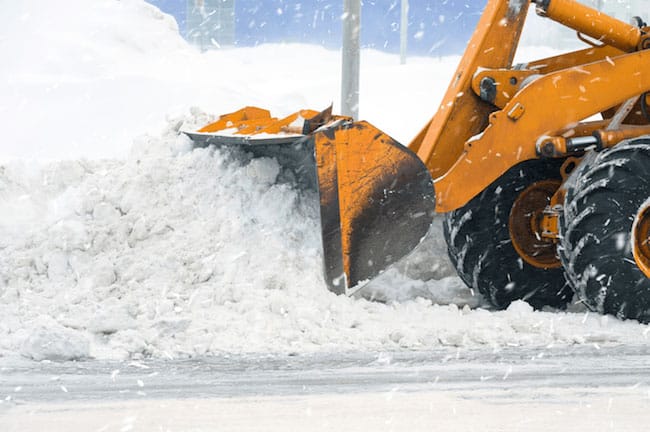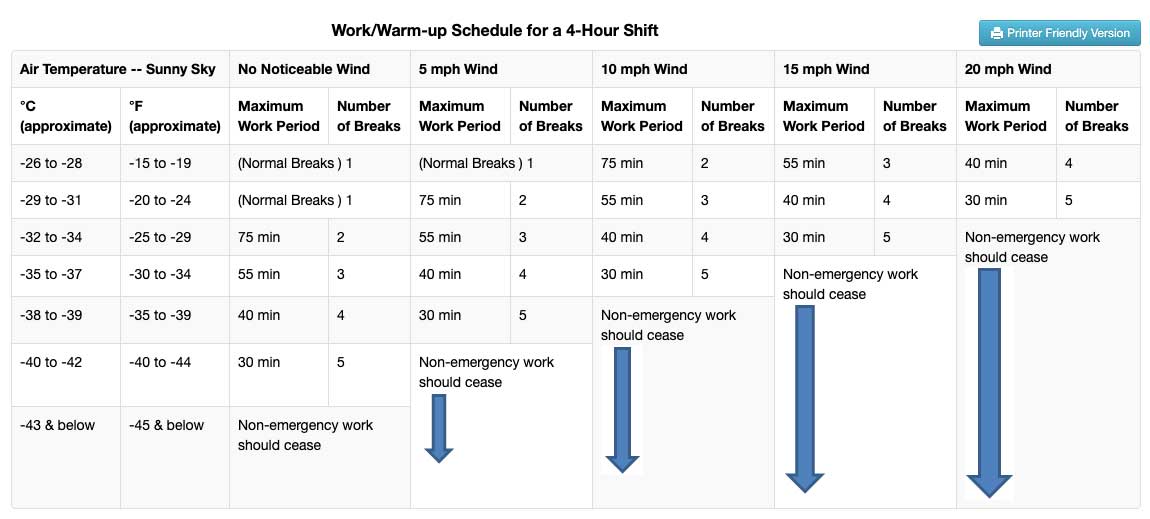
Winter Construction Hazards: How To Stay Safe In The Cold
Posted on December 6, 2019 in Firm News
Construction work in the winter doesn’t stop when the weather takes a turn for the worst. Through ice, sleet, and snow, these workers labor tirelessly. When most of us are huddled up to the closest source of heat, construction and outdoor tradesmen are completing vital projects and maintenance to keep our days running smoothly.
Employers who do not prepare their worksites for cold-weather hazards this winter could be setting employees up for construction accidents and injuries. These specific weather-related challenges require employers and contractors to make special preparations before the snow falls to protect their workers from harm successfully.
5 Winter Weather Hazards To Avoid
Winter weather in New York City is volatile and unpredictable. In one weekend, New Yorkers could experience a record-breaking blizzard, followed by a sunny 60-degree day. Regardless of which trade in the construction industry you practice, these are the five most dangerous winter weather hazards employers should consider before getting to work:
Snow Removal
Shoveling snow is no easy fret. According to FEMA’s Snow Load Safety Guide, light and fluffy snow can weigh up to three pounds per square foot, while heavy snow with ice on top weighs almost 57 pounds per square foot. If calculating the weight of a driveway that is 10 feet wide and 18 feet long, you’re looking at a shoveling job weighing over 10,000 pounds.
The National Safety Council (N.S.C.) reports snow removal is responsible for thousands of injuries and at least 100 deaths per year. Snow accumulation is extremely inconsistent in New York, making it even more essential for employers to have a plan in place for snow removal to avoid last-minute shoveling.
For large areas that require snow removal, employers should try to make other arrangements aside from using their employees. According to the Occupational Safety and Health Administration (O.S.H.A.), workers who are injured from removing heavy snow from worksites and rooftops can sustain catastrophic injuries, including:
- -Amputations
- -Eye injuries
- -Back over accidents (snowblower-related)
- -Tip-over accidents (snowblower-related)
- -Hypothermia from cold temperatures
- -Electrocution injuries from hitting live wires
- -Muscle and bone injuries
- -Heart attacks
- -Head and spinal injuries from falls
If it’s not possible to hire a professional snow removal service, employers can use these safety recommendations from the N.S.C. to reduce the risk of injuries to their employees:
- -Warm-up your body and dress warmly before removing snow.
- -Do not eat or smoke while removing snow. These habits slow your body down and require you to work harder.
- -Only shovel fresh, powdery snow. Snowblowers should be used for heavier snow.
- -Use long rakes to clear snow to avoid going up on the roof.
- -Lift with your legs, not your back when shoveling.
- -Wear work boots with snow traction.
- -Work in shifts and take breaks.
Cold Stress
Just as workers can suffer from heat stress in the summer, cold stress is a major health hazard during the winter months. Our bodies are not made to withstand the cold without protection. Risk factors such as wet/damp clothing, poorly insulated clothing, exhaustion, preexisting health conditions, or lack of physical activity can all result in permanent or even fatal injuries for outdoor workers in the winter.
The three most common cold stress injuries highlighted by O.S.H.A. include:
- Frostbite: This condition involves the freezing of skin and tissue, leading to irreversible damage to the body. Severe cases of frostbite require amputation. Symptoms include reddened skin with gray/white patches in the fingers, toes, nose, or ear lobes, tingling, aching, and loss of feeling.
- Hypothermia: This condition occurs when a worker’s average body temperature, typically 98.6 degrees, drops to less than 95 degrees. Cold weather causes the body to lose heat faster. Symptoms include uncontrollable shivering, loss of coordination, confusion, slurred speech, slowed heart rate and breathing, and inability to think clearly.
- Immersion/Trench Foot: This non-freezing injury occurs after prolonged exposure to wet and cold conditions. Symptoms include reddening skin, tingling, swelling, pain, leg cramping, numbness, and blisters.
Winter Driving Accidents
Cold stress injuries can affect workers in several different industries other than construction. Snow removal employees, recreational workers, police officers, firefighters, baggage handlers, transit workers, oil and gas operators, or any other workers who are exposed to the cold are at risk for cold stress injuries.
Employers should be scheduling their outdoor workdays according to the weather. The American Conference of Governmental Industrial Hygienists (A.C.G.I.H.) encourages employers and supervisors to consider a work/warm-up schedule during the winter months to prevent cold stress injuries. The recommended schedule below is based on a four-hour shift and takes into account air temperature and wind chill speeds to suggest break times for non-emergency outdoor workers.

Winter weather hazards make for dangerous driving conditions. According to a 10-year study on weather-related crash statistics by the Federal Highway Administration, there were 1,235,145 crashes from 2007 to 2016 that were caused by inclement weather conditions. Of these accidents, 418,000 people were injured, and 5,376 people were killed.
When examining the 10-years averages for accidents caused by winter weather-related conditions, these were the key findings:
- -70% of accidents resulted from wet pavement.
- -18% of accidents resulted from snow/sleet on the pavement
- -16% of accidents resulted from snow/slush on the pavement
- -13% of accidents resulted from icy pavement
The winter weather hazard with the highest rate of fatal accidents was wet pavement, resulting in 76% of all weather-related road fatalities recorded in the 10-year period. Wet pavement can be caused by ice, snow, freezing rain, or sleet. These conditions, in addition to wet pavement, make roads even more slippery and hard to navigate.
Adverse weather conditions cannot be avoided, but employers can keep workers safe on the road by enforcing driver safety policies, including:
- -Enforcing an effective maintenance program for all company vehicles and mechanized equipment.
- -Requiring all vehicles to carry an emergency kit in the case of an accident.
- -Training workers on how to operate work vehicles in the snow/winter weather.
- -Keeping roads on and around the worksite clear.
- -Using barrels and barriers to mark the roads and provide guidance when snow covers the worksite.
Non-emergency trades should not be asking their employees to risk their lives by driving to work in a snowstorm. If inclement weather is predicted, rearrange your work accordingly to keep workers off potentially dangerous roads.
Falls On The Ice
Falls are one of the leading causes of construction accidents and fatalities reported in O.S.H.A.’s “Fatal Four” every year. Ice and packed down snow can elevate the risk of slip and fall accidents on the worksite, and increase the severity of injuries sustained. Some of the most traumatic injuries workers have reported from slipping on the ice include:
- –Broken bones
- -Soft tissue damage and torn ligaments
- -Severe Lacerations
- –Traumatic Brain Injuries
- –Spinal Cord Injuries
Prompt snow and ice removal are the most effective methods of preventing cold weather-related slip and fall accidents. When snow becomes packed down over time, it slowly turns into thick sheets of ice that can be difficult to remove. Preventatively salting walkways and roads on the worksite can also reduce ice accumulation and the risk of falls.
Additional steps workers can take to reduce their risk of falling on the job this winter include:
- -Taking shorter steps when walking on ice and snow.
- -Using handrails on stairs.
- -Never climbing icy ladders.
- -Making sure to use fall protection whenever on elevated platforms or scaffolding.
- -Wearing work boots and gloves with good traction.
Melting Dangers
Because the temperatures in NYC are across the board during the winter, worksites may experience massive ice and snow melts throughout the year. Warmer temperatures following snowstorms could lead icicles and snowdrifts to plummet onto workers below. There are no official injury statistics on these accidents in the United States. However, O.S.H.A. reports at least 16 people have died in the last 10 years, and countless others have been injured from similar accidents.
To help prevent injuries caused by falling ice and snow, employers should keep all roofs and ledges clear as soon as it is safe. Icicles can become extremely dangerous when they grow large, becoming more deadly the further they fall. Making sure to clear any water accumulation on rooftops or growing icicles on ledges can help reduce the chance of them falling on unsuspecting workers below.
Never try to knock down icicles or snowdrifts while standing on the ground directly under them. To remove snow and ice from elevated surfaces, O.S.H.A. suggests hiring a professional snow removal service with a lift or allowing trained employees to use aerial lifts to access roofs. Employers may benefit from apply de-icing materials to roofs to prevent accumulation, depending on their industry. Marking off any areas on the worksite where snow and ice tend to slide off rooftops is also a great way to protect employees from surprise avalanches that can cause serious injuries.
New York City Construction Accident Attorneys
Injuries sustained from cold weather-related accidents can be prevented by following strict safety measures on the job. Employers who neglect to provide safe working conditions in the winter are putting workers at an unnecessary risk for injuries.
At the law firm of Pazer, Epstein, Jaffe & Fein, we have been fighting for New York City workers and victims of construction accidents for over 60 years. If you or a loved one has sustained a serious construction injury, our knowledgeable accident attorneys are here to help. Contact us using our convenient online form or feel free to phone us in New York at 212-227-1212, or in Huntington/Long Island at 631-864-2429.
Sources
“Why do People Die Shoveling Snow?” National Safety Council. (Retrieved December 4, 2019) https://www.nsc.org/home-safety/tools-resources/seasonal-safety/winter/snow-shoveling
“Snow Load Safety Guide.” FEMA. (Retrieved December 4, 2019)
“How Do Weather Events Impact Roads?” Federal Highway Administration. https:// ops.fhwa.dot.gov/weather/q1_roadimpact.htm
IMG: “Winter Weather.” Occupational Safety and Health Administration. (Retrieved December 4, 2019) https://www.osha.gov/dts/weather/winter_weather/windchill.html

